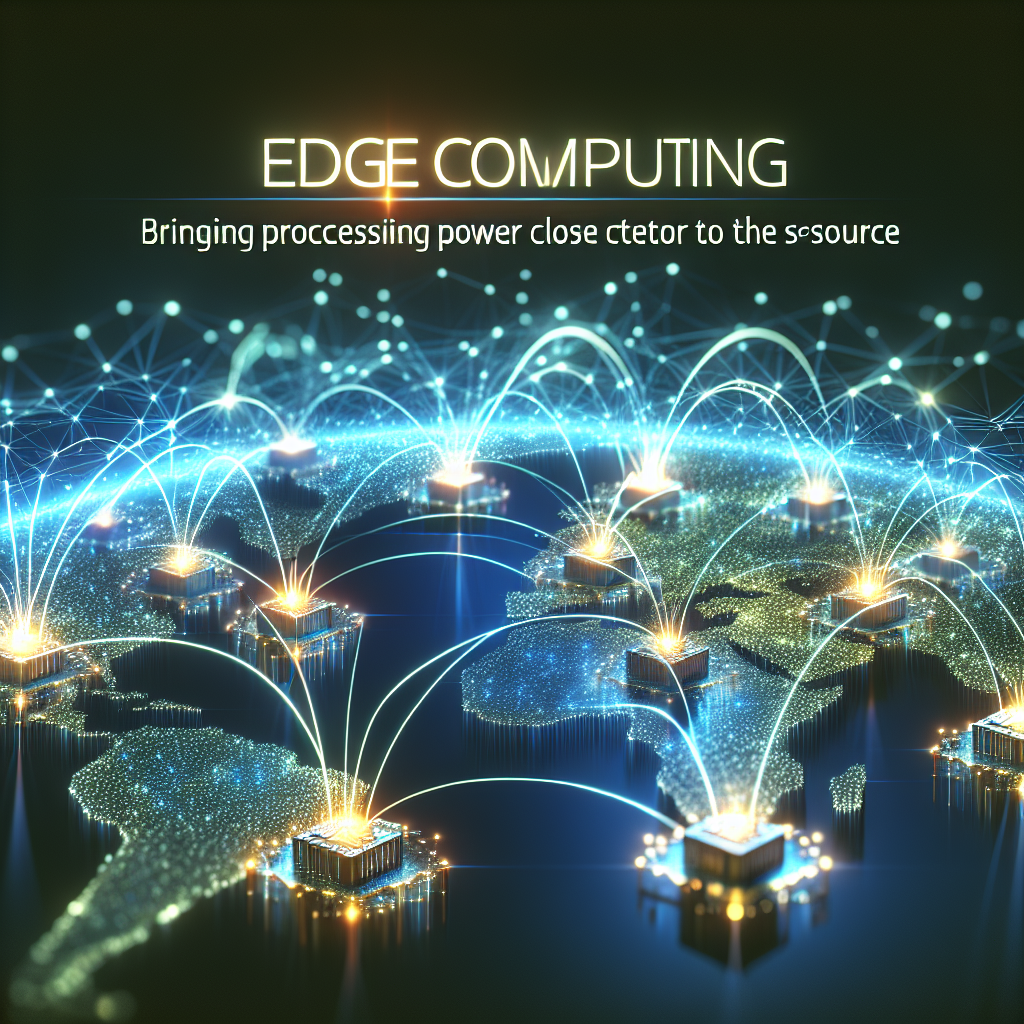Edge Computing: Bringing Processing Power Closer to the Source
Edge computing is a distributed computing paradigm that brings computation and data storage closer to the location where it is needed. By moving processing power closer to the source of data generation, edge computing reduces latency and improves performance for applications that require real-time data processing.
Benefits of Edge Computing
One of the key benefits of edge computing is reduced latency. By processing data closer to where it is generated, edge computing can significantly reduce the time it takes for data to travel to a centralized data center and back. This is especially important for applications that require real-time data processing, such as autonomous vehicles, industrial automation, and smart cities.
Another benefit of edge computing is improved reliability. By distributing computing resources across a network of edge devices, organizations can reduce the risk of a single point of failure. This decentralized approach to computing ensures that applications remain operational even if some edge devices fail.
Edge Computing Use Cases
Edge computing has a wide range of use cases across various industries. In the healthcare sector, edge computing can be used to process and analyze patient data in real-time, allowing for quicker diagnosis and treatment decisions. In the retail industry, edge computing can be used to analyze customer data at the point of sale, enabling personalized marketing and customer service.
Industrial automation is another area where edge computing is proving to be invaluable. By processing data from sensors and actuators at the edge, organizations can optimize manufacturing processes, improve equipment maintenance, and reduce downtime.
Challenges of Edge Computing
While edge computing offers many benefits, it also presents some challenges. One of the main challenges is managing a large number of edge devices spread across a wide geographical area. Ensuring the security and reliability of these devices can be a complex task that requires careful planning and implementation.
Another challenge is the need for standardized protocols and interfaces to enable interoperability between different edge devices and systems. Without common standards, integrating edge computing solutions from different vendors can be difficult and time-consuming.
In conclusion, edge computing is a powerful paradigm that brings processing power closer to the source of data generation. By reducing latency, improving reliability, and enabling real-time data processing, edge computing is transforming the way organizations approach data processing and analytics. As the adoption of edge computing continues to grow, organizations must address the challenges associated with managing a distributed network of edge devices and ensuring interoperability between different systems.






